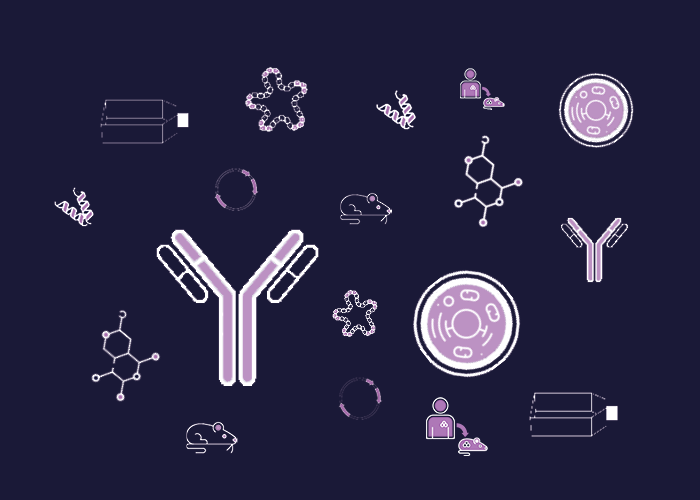
Cat. #151383
Anti-HLADR [CR3/43]
Cat. #: 151383
Sub-type: Primary antibody
Unit size: 100 ug
Availability: 10-12 weeks
Target: Human Leukocyte Antigen DR (MHC class II)
Class: Monoclonal
Application: FACS ; IHC ; WB
Reactivity: Human
Host: Mouse
£300.00
This fee is applicable only for non-profit organisations. If you are a for-profit organisation or a researcher working on commercially-sponsored academic research, you will need to contact our licensing team for a commercial use license.
Contributor
Inventor: Jacqueline Cordell
Institute: University of Oxford
Tool Details
*FOR RESEARCH USE ONLY (for other uses, please contact the licensing team)
- Name: Anti-HLADR [CR3/43]
- Research fields: Immunology
- Clone: CR3/43
- Tool sub type: Primary antibody
- Class: Monoclonal
- Purpose: Marker
- Conjugation: Unconjugated
- Reactivity: Human
- Host: Mouse
- Application: FACS ; IHC ; WB
- Description: Monoclonal antibody capable of HLA typing, reacting with subregions of class II antigens.
- Immunogen: Tonsil cells
- Immunogen uniprot id: P01903
- Isotype: IgG1
- Myeloma used: P3/NS1/1-Ag4.1
Target Details
- Target: Human Leukocyte Antigen DR (MHC class II)
- Tissue cell line specificity: Mouse
- Target background: Human Leukocyte Antigens (HLA) are highly polymorphic proteins that are involved in the presentation of antigens to the T-cell receptor. There are two classes of HLA antigens, class I (HLA-A, HLA-B and HLA-C) and class II (HLA-D). They are expressed primarily on antigen presenting cells such as B lymphocytes, monocytes, macrophages, thymic epithelial cells and activated T lymphocytes. The human MHC class II molecules bind intracellularly processed peptides and present them to T helper cells. ...
Applications
- Application: FACS ; IHC ; WB
Handling
- Format: Liquid
- Concentration: 1 mg/ml
- Unit size: 100 ug
- Storage buffer: PBS with 0.02% azide
- Storage conditions: Store at -20° C frozen. Avoid repeated freeze / thaw cycles
- Shipping conditions: Dry ice
References
- Baiardi et al. 2019. Ann Clin Transl Neurol. 6(2):263-273. PMID: 30847359.
- Kalsow et al. 2017. Ocul Immunol Inflamm. 25(6):878-883. PMID: 27715362.
- Kagami et al. 2017. J Clin Exp Hematop. 57(1):9-14. PMID: 28420813.
- van Duijn et al. 2017. J Alzheimers Dis. 60(4):1533-1545. PMID: 29081415.
- Breshears et al. 2012. J Biol Chem. 287(39):32578-87. PMID: 22833676.
- A disintegrin and metalloproteinase 17 (ADAM17) and epidermal growth factor receptor (EGFR) signaling drive the epithelial resp...



